1. DNA (India) – Virtual worlds will provide real security: Indian origin scientist. “A scientist of Indian origin has determined that advances in computers are making possible virtual worlds in which defense analysts can explore and predict results of many different possible military and policy actions. The scientist in question is VS Subrahmanian, a Maryland computer science professor and director of the University’s Institute for Advanced Computer Studies (UMIACS). According to Subrahmanian and John Dickerson, a UMIACS computer science researcher, “Defense analysts can understand the repercussions of their proposed recommendations for policy options or military actions by interacting with a virtual world environment.”
2. Canada.com (Canada) – Embracing the future of fitness. “It wasn’t that long ago that running with a Discman was considered cool. Of course, so was talking on a cellphone the size of a brick. Today, people run with a phone that not only plays music and takes calls, it maps your run while tracking speed, mileage, pace and calories burned. And runners aren’t the only exercisers being courted by technology: There are smartphone apps for cyclists, gym junkies, triathletes and swimmers. Even those without a smartphone can hop on the technology bandwagon: Nike and Apple have teamed up to track runners’ stats through an in-shoe transmitter and an iPod. Stationary bikes take cyclists on virtual rides through scenic routes, and provide the opportunity to compete in a virtual race against the cyclist beside you or in the next country.”
3. VentureBeat (USA) – Next Island to launch sci-fi adventure virtual world — with time travel. “Next Island is the latest company to launch an ambitious virtual world. But this sci-fi adventure paradise comes with an interesting twist: time travel. The company is announcing today that it is building a world in MindArk’s massively multiplayer online virtual universe, Entropia Universe. That means it has licensed virtual world technology from MindArk, whose technology is behind Planet Calypso, which until now has been the only virtual world in the Entropia Universe. Next Island will be the “planet†going live in the virtual universe. Its private beta begins in less than 30 days.”
4. brand-e (UK) – New life for Second Life. “Online sharing. It’s time to brand the virtual world. That’s why UK-based Corporation Pop is making use of the Second Life platform providing a secure place for folk to meet and communicate. So, even when individuals are hundreds of miles apart, they can almost shake hands thanks to their virtual avatars. The environments Corporation Pop creates can be used for anything from team training and game-based learning to consultations and ceremonies. And they include nifty extras like embedded external video, as well as voice technology.”
5. Marketing Web (South Africa) – Real-world value of virtual markets. “News headlines for the past year have been dominated by the effects of the global recession. This trend has affected almost all industries, with computer gaming being one of the few exceptions. Shortly before the recession kicked in computer gaming overtook movies in entertainment spending, and was on track to surpass music too. When the recession hit it wasn’t immune, but the gaming growth curve lasted longer, and has kicked back in sooner, than many other industries. After a dismal September 2009 the industry has seen the first signs of turn-around as initial Q4 sales data is starting to come in.”
6. Wired (USA) – World of Warcraft Quests Remain Compelling, 5 Years On. “After five years, it’s hard to imagine a world without World of Warcraft. Released Nov. 23, 2004, the massively multiplayer online role-playing game has set the standard for the genre. More than 11.5 million players from around the world, from all walks of life, spend hours a day in the world of Azeroth. They embark on epic adventures, battle other players or just hang out. And each of them pays developer Blizzard Entertainment $15 per month for the privilege. Players create characters and develop them over time, forging relationships with other gamers and going on quests to gain experience or loot. Whether they play with strangers, friends or alone, Warcraft’s polished virtual world proves easy to get into and hard to get out of.”
7. Hypergrid Business (Hong Kong) – Virtual goods hit $1 bil in U.S. “The U.S. virtual goods market doubled in size from 2008, to reach $1 billion this year, according to a new report from Inside Network. “While virtual goods have been driving revenues in Asia and Europe for years, 2009 will be remembered as the year virtual goods-based businesses began to scale in the United States,†said Insight network editor Justin Smith in a statement. The size of the Asian virtual goods market reached $7 billion in 2009.”
8. The Telegraph (UK) – Advertisers pile into augmented reality. “The technology origin myths say that the Model T Ford made cars, books made e-commerce and pornography made VHS. It seems that augmented reality, which takes the real world as seen through a mobile phone camera or computer webcam and adds images, digital models and data, is to be made by advertising. Not passive advertising like billboards or television commercial breaks, where you lie back and let the spending opportunities wash over you, but active advertising that you seek out and voluntarily engage with.”
9. PsychCentral (USA) – The Proteus Effect: How Our Avatar Changes Online Behavior. “The other day, a commenter asked whether people “truly represent themselves for who they are, do they take on different personality characteristics while in their online persona, and how is their level of tolerance for disagreement affected?†One way to examine this question is to look how people provide based upon their choice of avatar — the pictorial representation of themselves in an online environment (such as virtual reality game).”
10. BBC (UK) – ‘Virtual graduation’ for students. “A university is to hold a “virtual graduation ceremony” for students on a distance learning course. Edinburgh University will broadcast the ceremony at its McEwan Hall on to the Second Life web community.
The move will ensure students on its E-Learning course who are unable to travel to Edinburgh do not miss out on the graduation celebrations. They will be able to download robes for their online avatars, and gather in a virtual bar after the ceremony.”
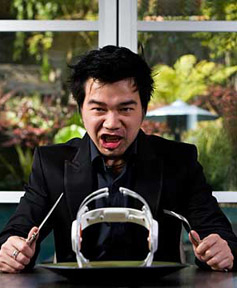 I’ve been following the progress of
I’ve been following the progress of 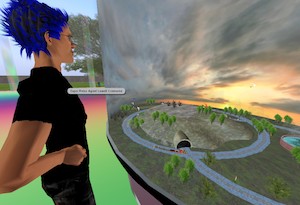 1. The University of Western Australia’s
1. The University of Western Australia’s 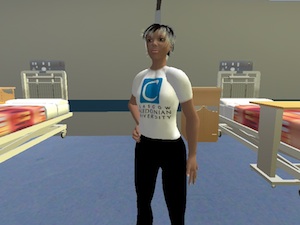 (This story appeared earlier today over at
(This story appeared earlier today over at 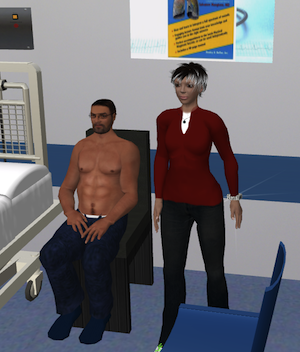 Kali: Constructivism and social constructivism are the key learning theories in my work. By linking history and heart and lung sounds to other parts of a clinical scenario, I am building on the students previous knowledge to create new knowledge. People in simulations tend to act the same as they do in real life. The ability to capture the text allows for reflection on the decision-making of this particular group.
Kali: Constructivism and social constructivism are the key learning theories in my work. By linking history and heart and lung sounds to other parts of a clinical scenario, I am building on the students previous knowledge to create new knowledge. People in simulations tend to act the same as they do in real life. The ability to capture the text allows for reflection on the decision-making of this particular group. Unless you’ve avoided all news over the past year or so, you’ll have heard about the upcoming
Unless you’ve avoided all news over the past year or so, you’ll have heard about the upcoming 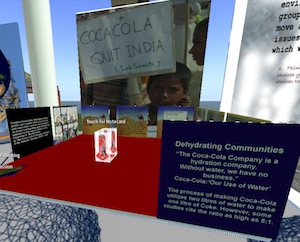
Recent Comments